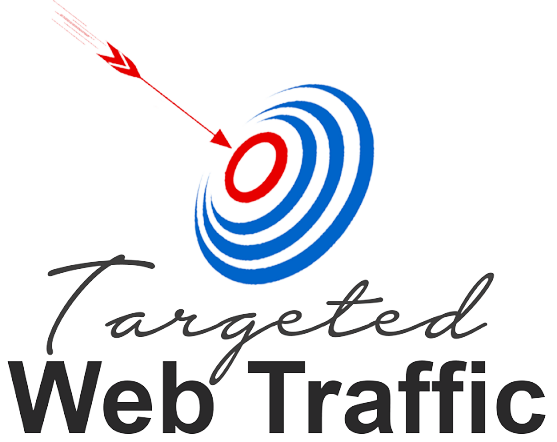What Hours Are Peak Website Traffic Hours?
Global Trends
Worldwide, as you might expect, “peak hours” for activity are relatively steady. Think about it like this; you get off work at 5pm, drive home, spend time with your family over dinner and then sign on the Internet to check your email or load up Netflix, around 7pm. You, and millions of people like you, are doing the same thing at the same time. A few hundred miles west, people are doing the same thing, with an hour delay due to a different time zone. Go further west and the delay is longer. Cross the ocean where your 7pm is their 7am and you see the trends reverse.
Or, to see a graphical representation, you can see the Internet Traffic Report’s global trend graph. Averaged out, “peak hours” remain steady around the clock.
Of course, this knowledge isn’t valuable. Your business doesn’t care about when the peak hours are for Internet usage in Ghana. What you care about is your country or, in the case of local businesses, your city.
Regional Trends

Speaking generally, regardless of time zone, you can assume a few things about local Internet usage. The so-called Internet Rush Hour is typically between 7pm and 9pm, regardless of time zone. This is the time when most users have arrived at home, have completed their commute, shopping, dinner and other responsibilities, and have settled in to the Internet for the evening.
For many ISPs, this is a time of heavy load, and is a corresponding time of bandwidth throttling to ensure smooth flow and a connection free of bottlenecks. This is when many users are signing on to social media sites for the evening, and it’s a peak time for posting your messages, so that you can place your posts in front of as many people as possible. Posting early is recommended, to catch them when they’re fresh and more likely to read your messages. On the other hand, you need to avoid posting so early that other businesses overlap your message, shoving you to the bottom of the pile.
Factors to Consider

There’s a lot more to consider beyond the basic activity times of your users. For one thing, not all users act the same. A business that caters to a demographic of 60+ year old men and women will find the Internet-using habits very different from a business catering to teenagers. Mobile devices throw a wrench into the works with always-available connectivity. Some businesses even cater to users working night shifts, inverting the best peak hours. What factors matter?
Type of action. Facebook users have different timing and browsing habits than Twitter users, which will have different habits than the readers of your blog. People check their email accounts more frequently than their social media accounts, and will very likely check everything else more frequently than they check your website.
Audience location. If you’re a small local business, the only people you need to concern yourself with are the local users. Your peak hours are going to be different than those of the online-only business that caters to a national or global audience, with always-open doors.
Audience demographics. The age of your audience tends to have an effect on browsing times. Other demographics, such as employment, religion and relationship status can have an effect as well. For example, you’re not likely to see a large Catholic audience during mass, nor will you see distinct peak hours for the unemployed.
Targeted device. If you’re specifically catering to mobile users, you have a bit more freedom. Mobile users tend to check when they have breaks, so you get an extra bonus to visibility during lunch, among other times. On the other hand, desktop users procrastinating during the last few hours of work may check their favorite sites.
Specifics and Examples
It’s not unusual for large companies to run studies to accumulate statistics about their peak usage and post timing, publishing infographics and blog posts about what works best for them. Here are some data points accumulated from such studies.

- Facebook posts tend to do best when posted any day between 1pm and 4pm.
- LinkedIn users are most active midweek, Tuesday, Wednesday and Thursday.
- Twitter users have a slanted peak, with more activity earlier in the week, tapering off after 3pm.
- Pinterest is the opposite, with peak users on Friday afternoons.
- Facebook is the worst between 8pm and 8am, particularly on weekends.
- Twitter virtually goes silent after 8pm.
- LinkedIn users aren’t very active on Mondays or Fridays.
- Tumblr’s younger demographics are rarely active before 4pm, due to school.
Measuring Your Audience
Of course, all of the data above is just generalizations. None of it is guaranteed to be applicable to your own personal situation. Your business may be the exception to the rule, garnering a lot of late evening Twitter activity or weekend Facebook usage. Therefore, it’s of critical importance to measure your audience, experiment and discover when your own peak hours happen to be.
Different forms of activity have different means of measurement. Blogs can be measured with Google Analytics. Google+ has the Timing+ extension. Facebook has its insights, giving you plenty of historical data. Buffer can give you accumulated data for any platform you use through their service.
Make use of these tools and learn when your users are most active and most engaged. Tailor your post schedules to best fit with their activity, so you’re always on their minds.
Training Your Audience

Beyond reacting to your audience, you can put a little bit of Pavlov into action. Train your audience to show up at your beck an call, rather than contorting your social efforts to fit with their schedules.
For example, some successful blogs have started events that take place each week. A Friday Q&A event is one such example. Inform your readers that each Friday, for a two hour span, you will be online and live through your comments, a chat program or Google Hangouts. During that time, you will interact with your users, post new blog entries and generally maintain a hub of activity.
When you do this, your most interested users will come around to see what the fuss is about. When you keep to the schedule from week to week, you’ll be able to train your audience to be watchful and visit during those hours, to participate.
Buy Traffic Today to Boost Conversions & Sales
Utilize our powerful traffic network to maximize your website potential




